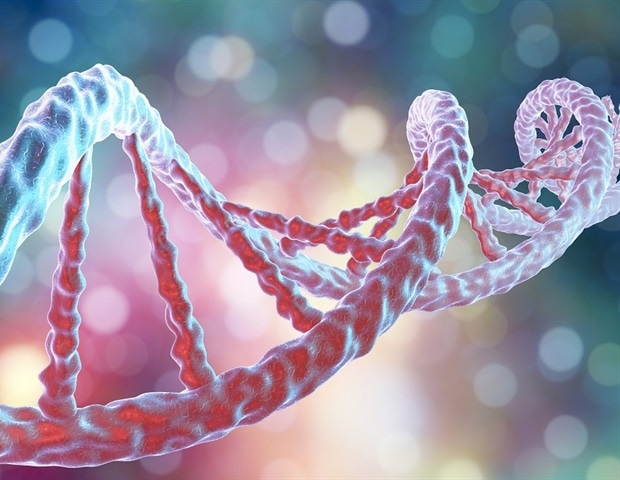
[ad_1]

Scientists at UNSW Sydney have created a brand new materials that might change the way in which human tissue could be grown within the lab and utilized in medical procedures.
The brand new materials belongs to a household of drugs known as hydrogels, the essence of life’s ‘squishy’ substances present in all dwelling issues, reminiscent of cartilage in animals and in crops like seaweed. The properties of hydrogels make them very helpful in biomedical analysis as a result of they will mimic human tissue, permitting cells to develop in a laboratory.
There are additionally human-made hydrogels which can be utilized in a broad vary of commodity merchandise starting from meals and cosmetics to contact lenses and absorbent supplies, and extra lately in medical analysis to seal wounds and exchange broken tissue. Whereas they could perform adequately as house fillers that encourage tissue progress, artificial hydrogels fall brief in recreating the advanced properties of actual human tissue.
However in a analysis paper printed at the moment in Nature Communications, scientists from UNSW describe how a brand new lab-made hydrogel behaves like pure tissue, with numerous stunning qualities which have implications for medical, meals and manufacturing expertise.
Affiliate Professor Kris Kilian from UNSW’s Faculty of Supplies Science & Engineering and Faculty of Chemistry says the hydrogel materials is created from quite simple, brief peptides, that are the constructing blocks of proteins.
The fabric is bioactive, which signifies that encapsulated cells behave as if they’re dwelling in pure tissue.”
Kris Kilian, Affiliate Professor from UNSW’s Faculty of Supplies Science & Engineering and Faculty of Chemistry
“On the identical time, the fabric is antimicrobial, that means that it’s going to forestall bacterial infections. This mix lands it within the candy spot for supplies that is perhaps helpful in medication. The fabric can also be self-healing, which suggests that it’s going to reform after being squished, fractured, or after being expelled from a syringe. This makes it excellent for 3D bioprinting, or as an injectable materials for medication.”
Shock discovery in lockdown
Ashley Nguyen, a PhD scholar within the UNSW Faculty of Chemistry and first creator on the paper, made this discovery throughout the Covid19 lockdown utilizing laptop simulations. Ms Nguyen was on the lookout for molecules that self-assemble – the place they spontaneously prepare themselves with out human intervention – and stumbled upon the idea of ‘tryptophan zippers’. These are brief chains of amino acids with a number of tryptophans that act as a zipper to advertise self-assembly, which have been dubbed “Trpzip”.
“I used to be excited to establish a singular peptide sequence utilizing computational simulations that may type a hydrogel,” says Ms Nguyen.
“After we returned to the lab, I synthesized the highest candidate and was thrilled to see it truly type a gel.”
Ms Nguyen says the invention of this hydrogel has the potential to be an moral various to the broadly used pure supplies.
“Pure hydrogels are used throughout in society-;from meals processing to cosmetics-;however require harvest from animals which poses moral issues,” she says.
“Additionally, animal-derived supplies are problematic to be used in people due to the adverse immune response that happens. With Trpzip, we’ve got an artificial materials that not solely reveals potential in lots of areas the place pure supplies are at present used, but additionally might outperform them in others, reminiscent of medical analysis.”
Actual world outcomes
To check the viability of Trpzip in biomedical analysis, A/Prof. Kilian’s staff partnered with researcher Dr. Shafagh Waters within the Faculty of Biomedical Sciences at UNSW Sydney, who makes use of Matrigel – a hydrogel harvested from mouse tumors – for the tradition of affected person tissue in her analysis.
“Matrigel has some disadvantages in analysis use as a result of each batch is totally different. A chemically outlined various might be cheaper and extra uniform, which might show extremely helpful to biomedical analysis,” says Dr Waters.
A/Prof Kilian notes that the pure supplies enterprise is a billion-dollar trade and says the staff is eager to discover pathways to commercialization.
“We expect that Trpzip hydrogels and supplies like it’s going to present a extra uniform and cost-effective various to animal-derived merchandise. It might be an incredible consequence if our materials diminished the variety of animals utilized in scientific analysis.”
The subsequent section of analysis will contain partnering with trade and medical scientists to check the utility of Trpzip gels in tissue tradition and discover purposes that spotlight the distinctive dynamic traits like 3D bioprinting and stem cell supply.
Supply:
Journal reference:
Nguyen, A. Ok., et al. (2023). Hierarchical meeting of tryptophan zipper peptides into stress-relaxing bioactive hydrogels. Nature Communications. doi.org/10.1038/s41467-023-41907-1.
[ad_2]